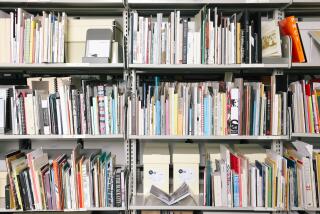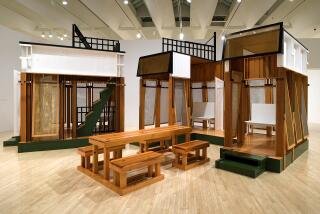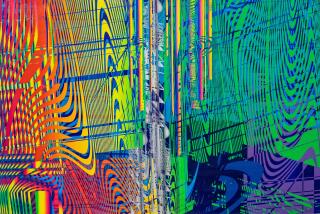Reality at the idyllic Yaddo
- Share via
NEW YORK -- Iron gates from the Yaddo artist colony, with the Yaddo logo and its muscular, musical “Y” spelled out in script, have been installed inside the New York Public Library for a four-month exhibit, allowing you to imagine the same rustic grounds entered by James Baldwin, Leonard Bernstein and so many others.
But you will soon take in what Yaddo’s chosen artists discovered: The promised seclusion was ever broken by the shouts of current events. Poverty. Race. War. Politics. From the start, Yaddo reflected, contrasted and anticipated the news of the day.
“That was a conscious part of the planning [of the exhibit],” says curator Micki McGee, a professor of sociology at Fordham University. “Yaddo was envisioned as an escape from the urban environment, with its noise and speed and all the kinds of things we associate with industrialization. But the fantasy of retreat can never really be fulfilled.”
“Yaddo: Making American Culture,” which opens today, is a multimedia display of videos, slides, sound recordings, pictures, paintings, letters, telegrams and an Internet kiosk that allows you to look up who was staying at Yaddo -- and how they were getting on -- at a given time.
In the late 19th century, the lives of wealthy Saratoga Springs, N.Y., residents Spencer and Katrina Trask were shattered when all four of their children died young. The grieving parents bequeathed their home and property to the arts, a haven, as Katrina Trask envisioned during a walk in the woods, for those “thirsting for the country and for beauty.” It was to be called Yaddo, in honor of how one of their children pronounced “shadow,” and its mission was to provide artists an opportunity to work without interruption in a supportive environment. It opened in 1926.
More to Read
The biggest entertainment stories
Get our big stories about Hollywood, film, television, music, arts, culture and more right in your inbox as soon as they publish.
You may occasionally receive promotional content from the Los Angeles Times.










